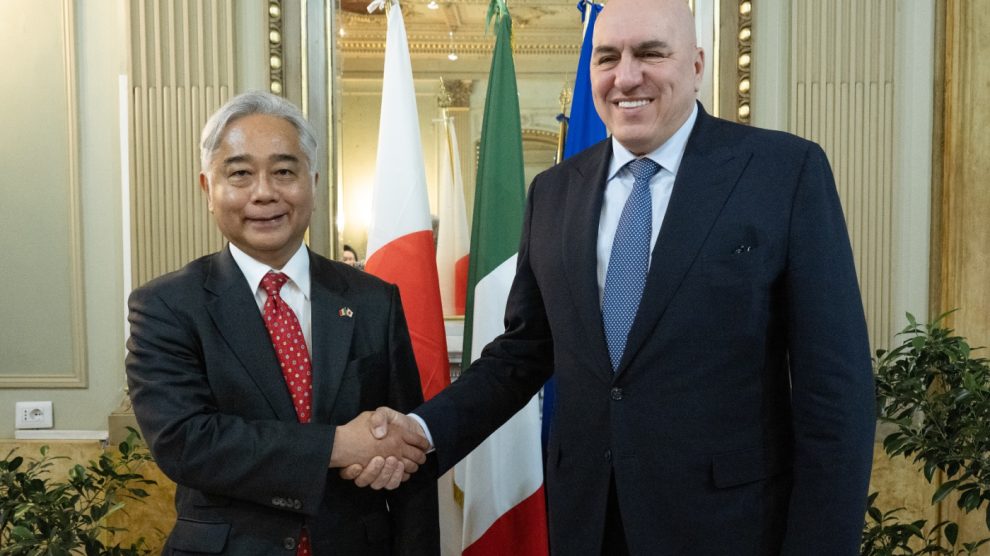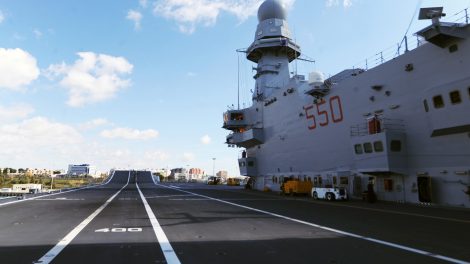Rome and Tokyo talk defence. On Thursday, Italian Defence Minister Guido Crosetto met with Japan’s Deputy Defence Minister, Atsuo Suzuki, in Rome. The chat was geared at further strengthening the dialogue between Rome and Tokyo and the bilateral cooperation between armed forces.
- The meeting highlighted Japan’s growing activism on the international stage, as well as its recognition of Italy’s central role in the increasingly close relationship between Japan and the West.
- Japanese Prime Minister Fumio Kishida recently met with his Italian counterpart, Giorgia Meloni, in Rome. The two elevated the Italian-Japanese relations to a “strategic partnership,” which includes a mechanism of bilateral foreign defence consultations that’s expected to meet for the first time later this year.
Asia-bound. The meeting also preceded Minister Crosetto’s upcoming trip to Japan. As we previously reported, that could be part of a broader Asian trip. Another potential destination is Indonesia, where Mr Crosetto would meet his counterpart Prabowo Subianto, who already expressed his appreciation for Italy’s “commitment to the current geostrategic framework and its technological excellence.”
GCAP’s all the craze. An important chapter in the relationship between Rome and Tokyo is the sixth-generation Global Combat Air Programme fighter aircraft, which will be jointly developed by Italy, Japan and the United Kingdom.
- As Minister Crosetto recently told us, the programme “can be an important driver for trade and economic relations between Rome and Tokyo” and “will have significant spill-over effects on production sectors, including the civil sector, and research and development.”
The nitty-gritty. GCAP envisages the development of an integrated system-of-systems for air combat, in which the main platform, i.e. the aircraft itself (more properly understood and equipped with a human pilot) is the centre of a network of remotely piloted aircraft with different roles and tasks, from reconnaissance to deep penetration, controlled by the central node and inserted in an ecosystem capable of multiplying the effectiveness of the system itself.
- The entire package is inserted into the all-domain dimension, meaning it can communicate effectively and in real-time with other military devices on land, sea, air, space and cyberspace.
- This integration will allow the GCAP to be multi-domain from its conception, designed to coordinate with all other deployable military assets.
- It will enable decision-makers to have a complete and constantly updated picture of the area of operations, acting as a multiplier effect on scenario analysis capabilities and on decision-making options in response to changing events.
The role of Italian industries. The Italian team of companies participating in the international programme consists of Leonardo (a strategic partner), Elettronica, Avio Aero and MBDA Italia. They all recently signed an agreement to support the Ministry of Defence’s action and to start the second phase of system development – concept, assessment, and demonstration activities.
- Thus, these industries will be able to collaborate as equals in the development of the technologies together with their respective champions from Japan – such as Mitsubishi Heavy Industries, IHI Corporation, and Mitsubishi Electric – and from the UK – BAE Systems, Rolls-Royce, and the UK divisions of Leonardo and MBDA.
Image: Defence Minister Crosetto’s Twitter profile




